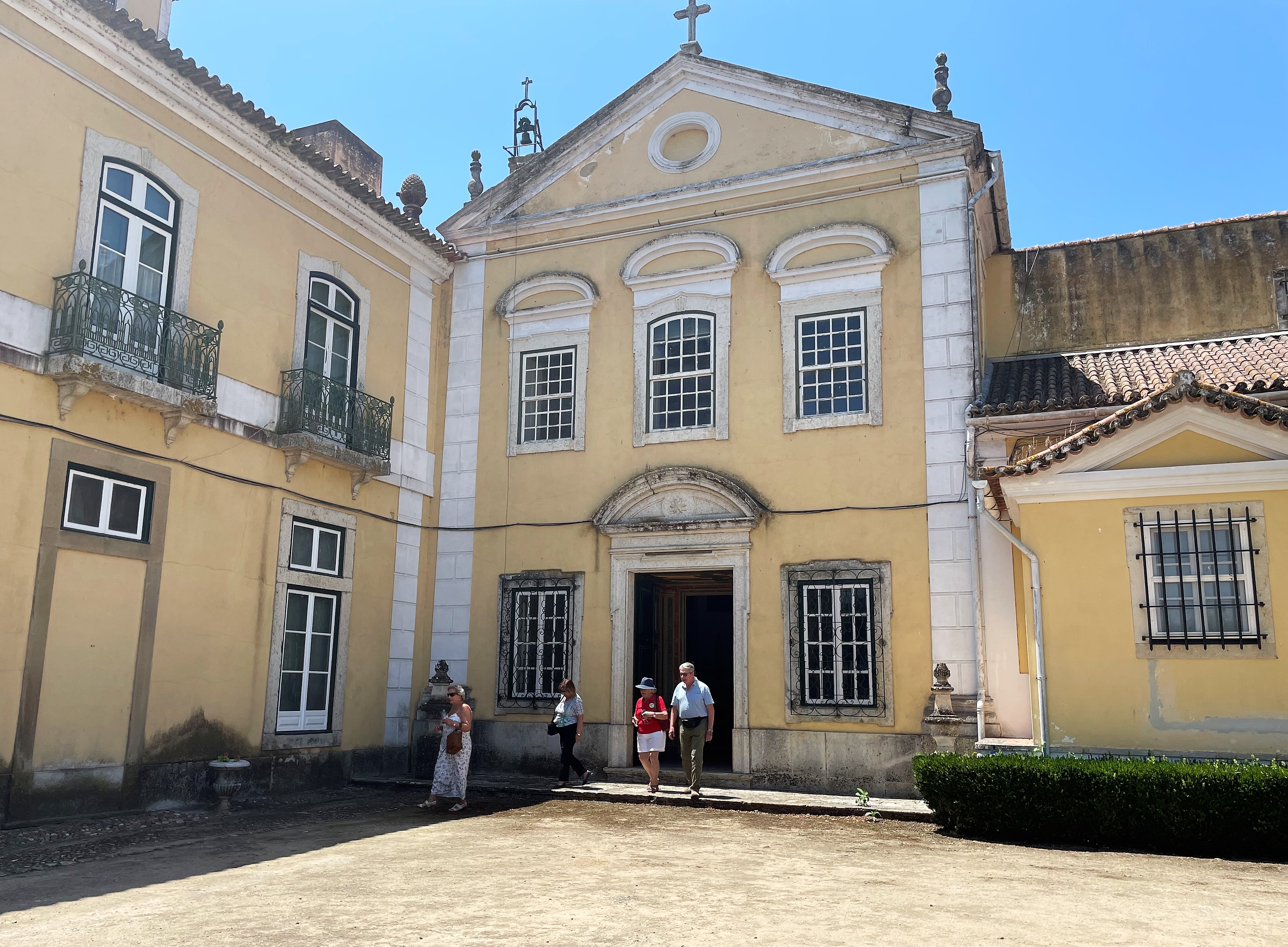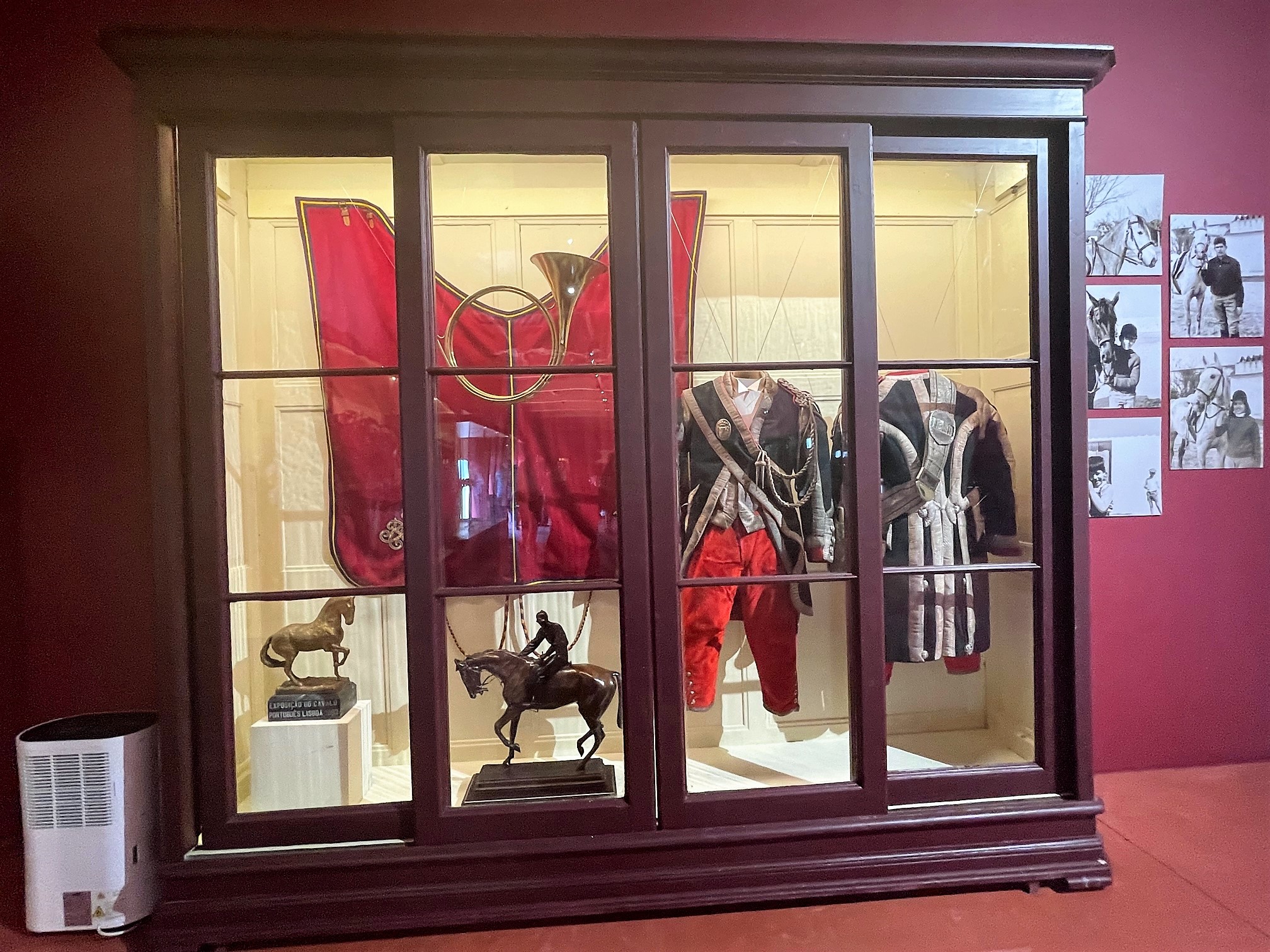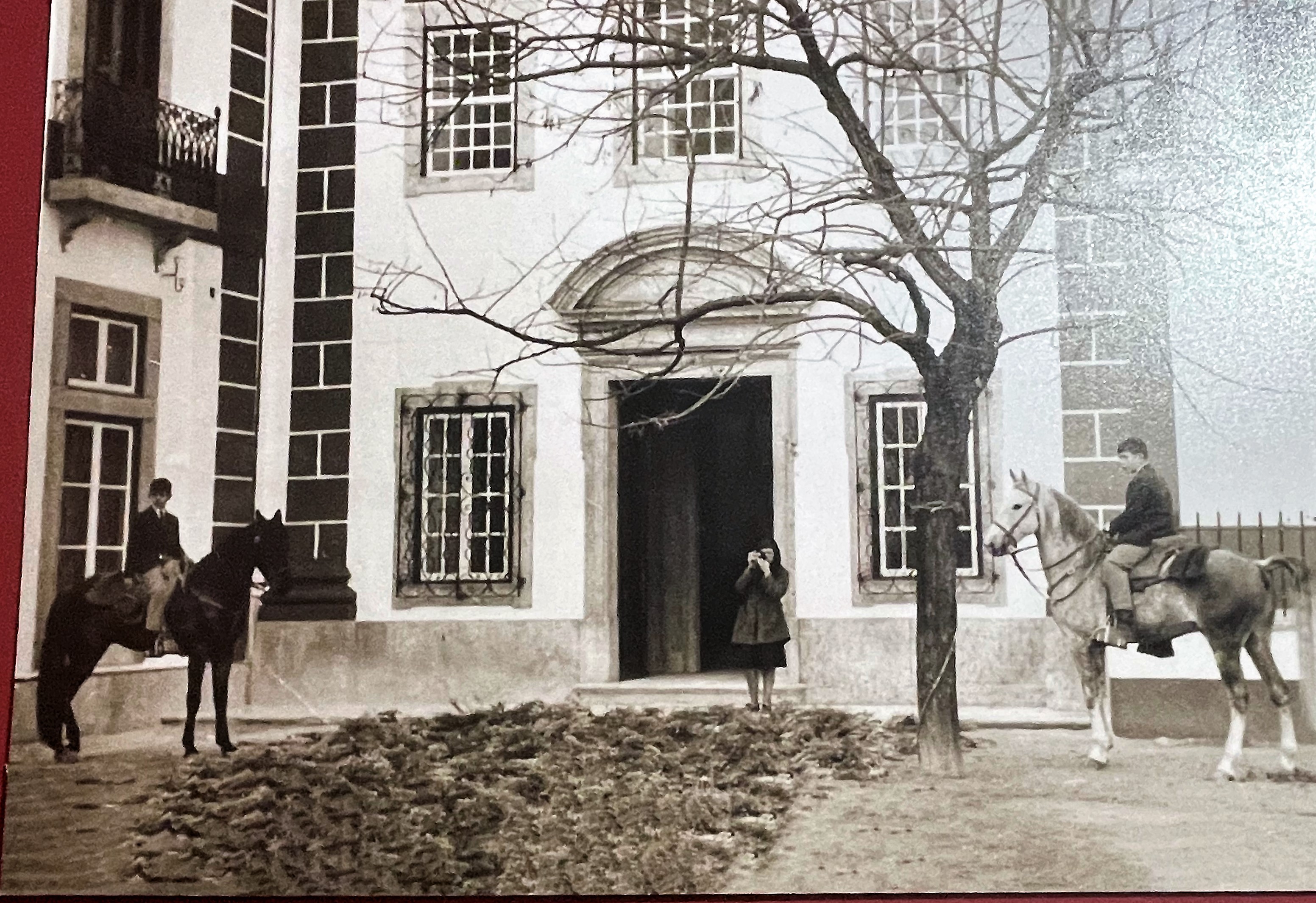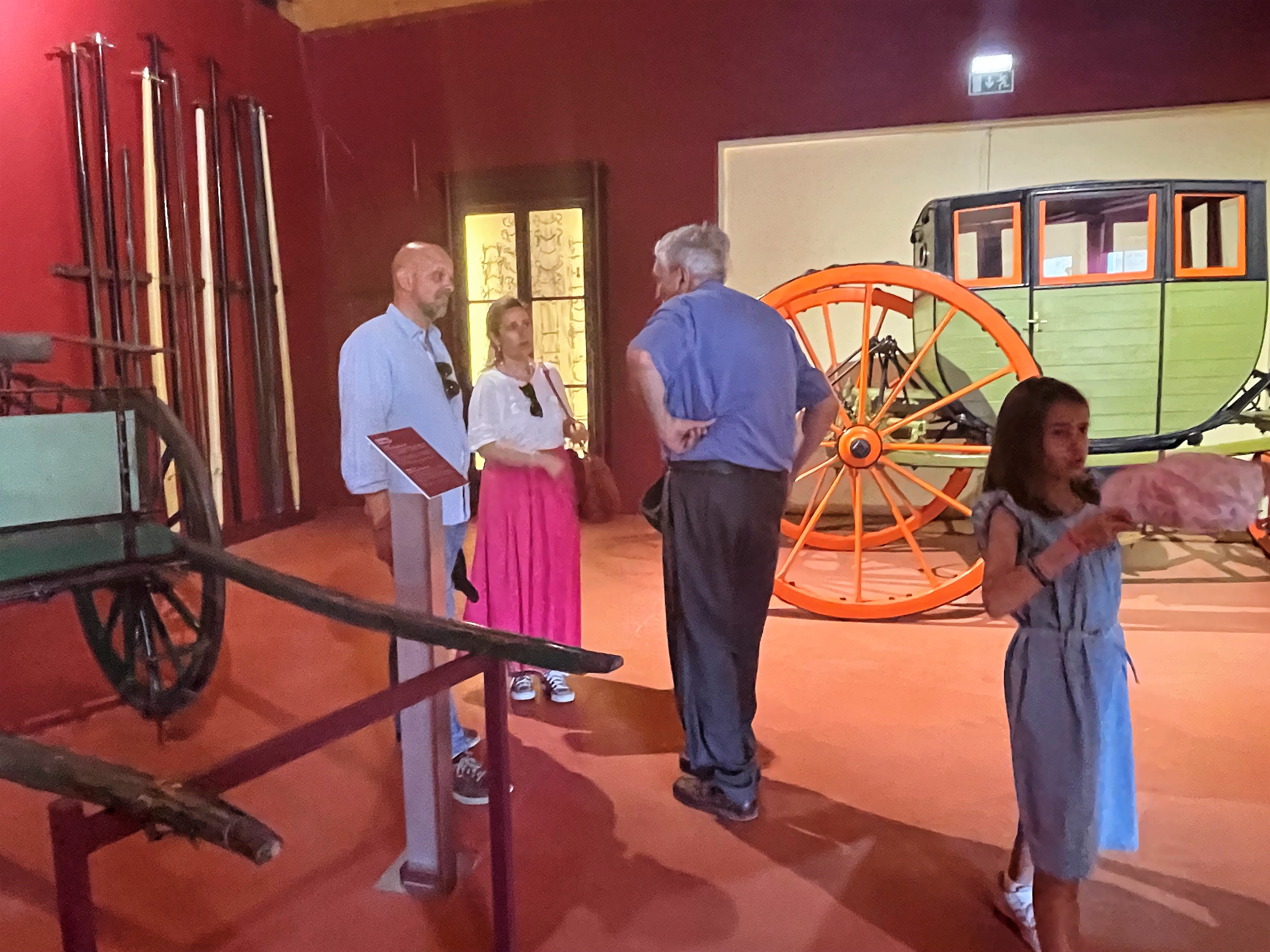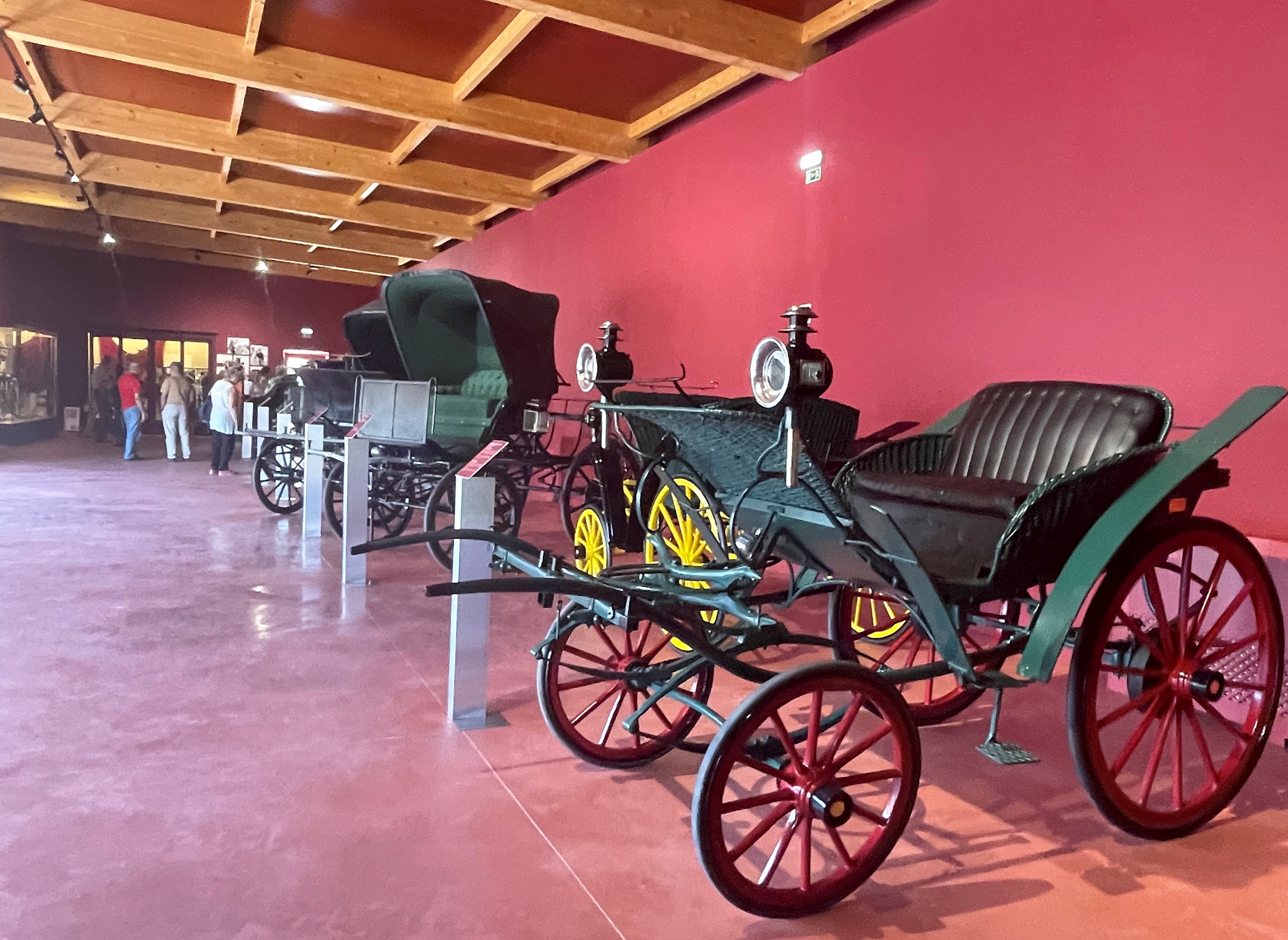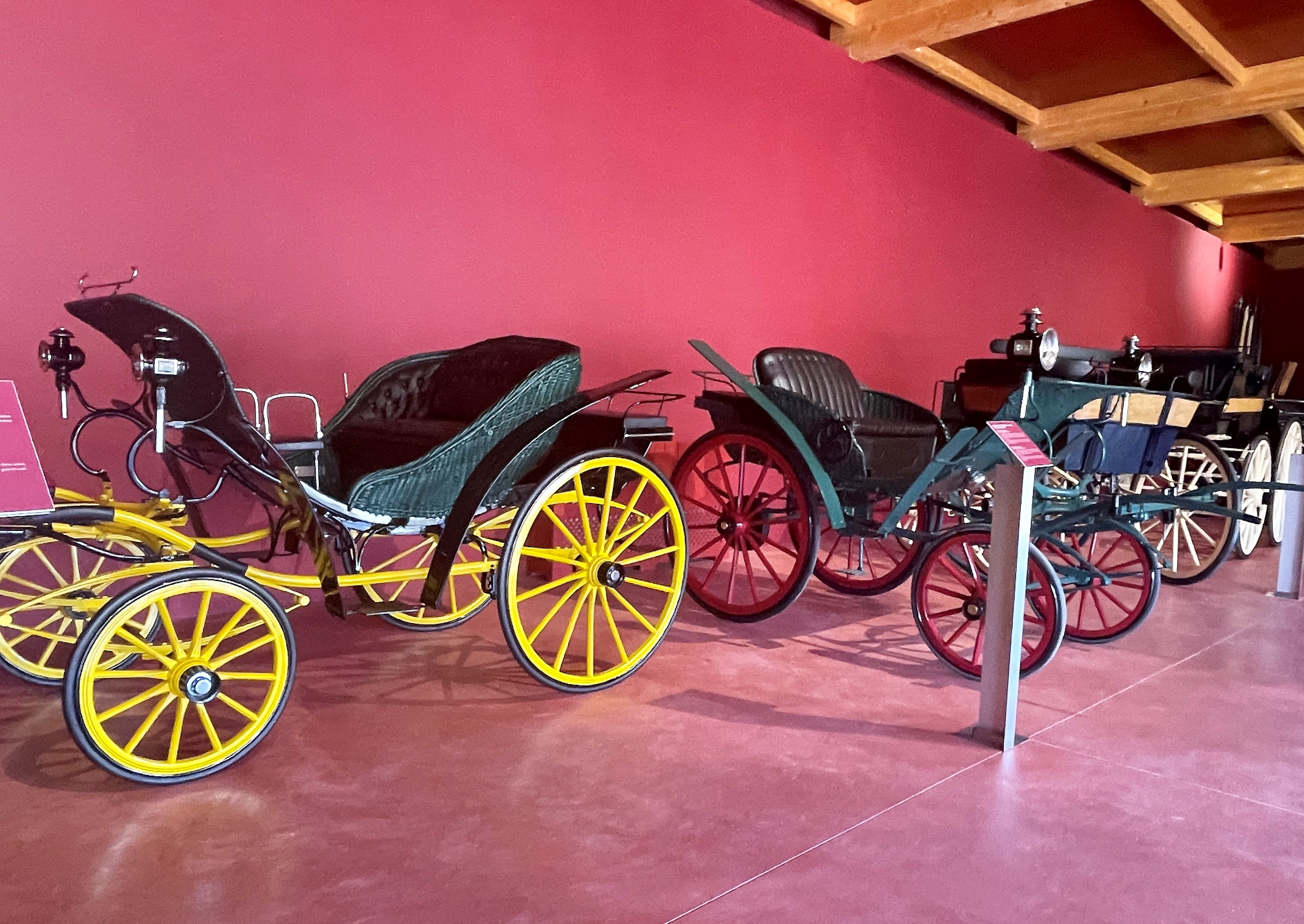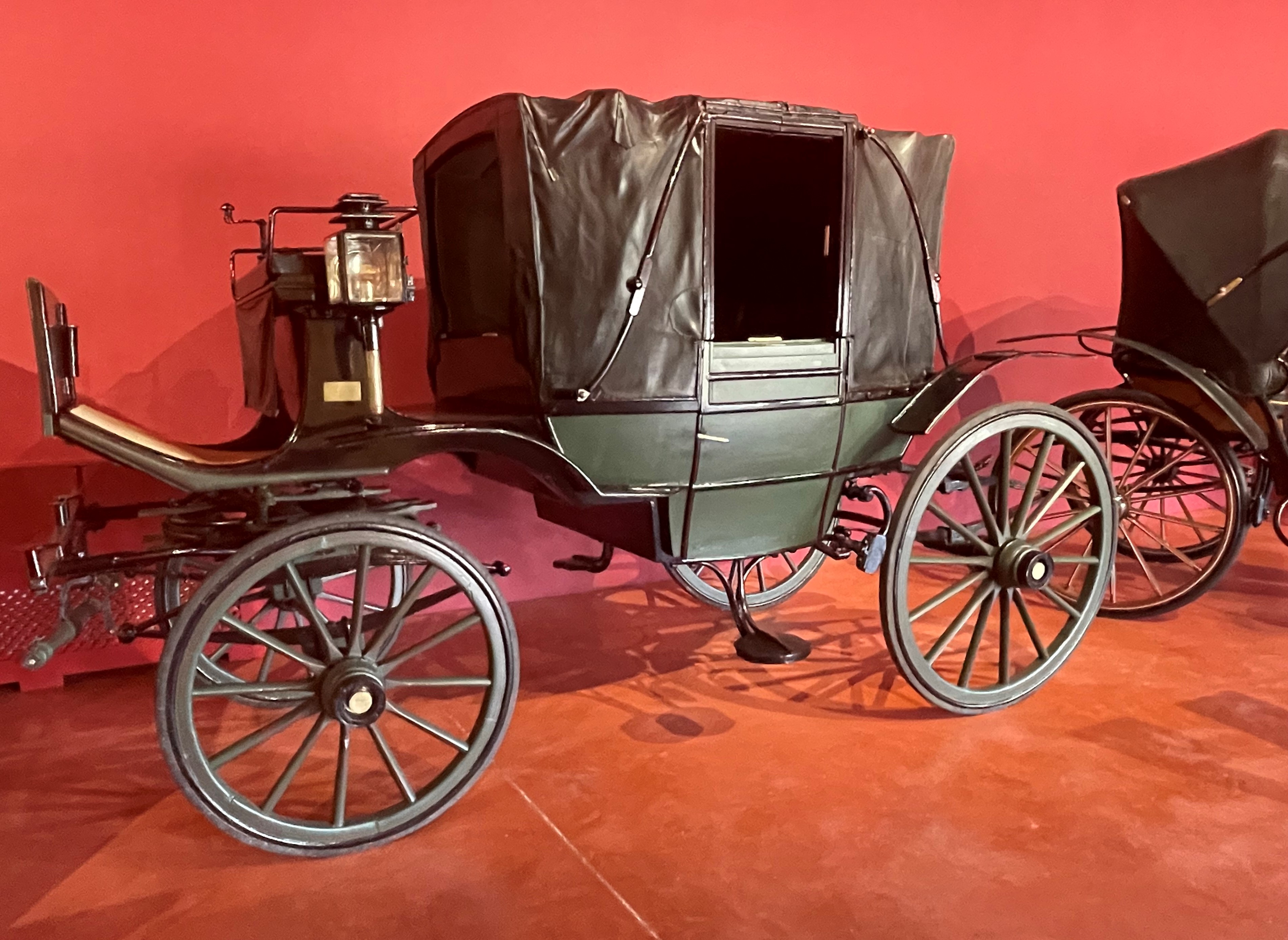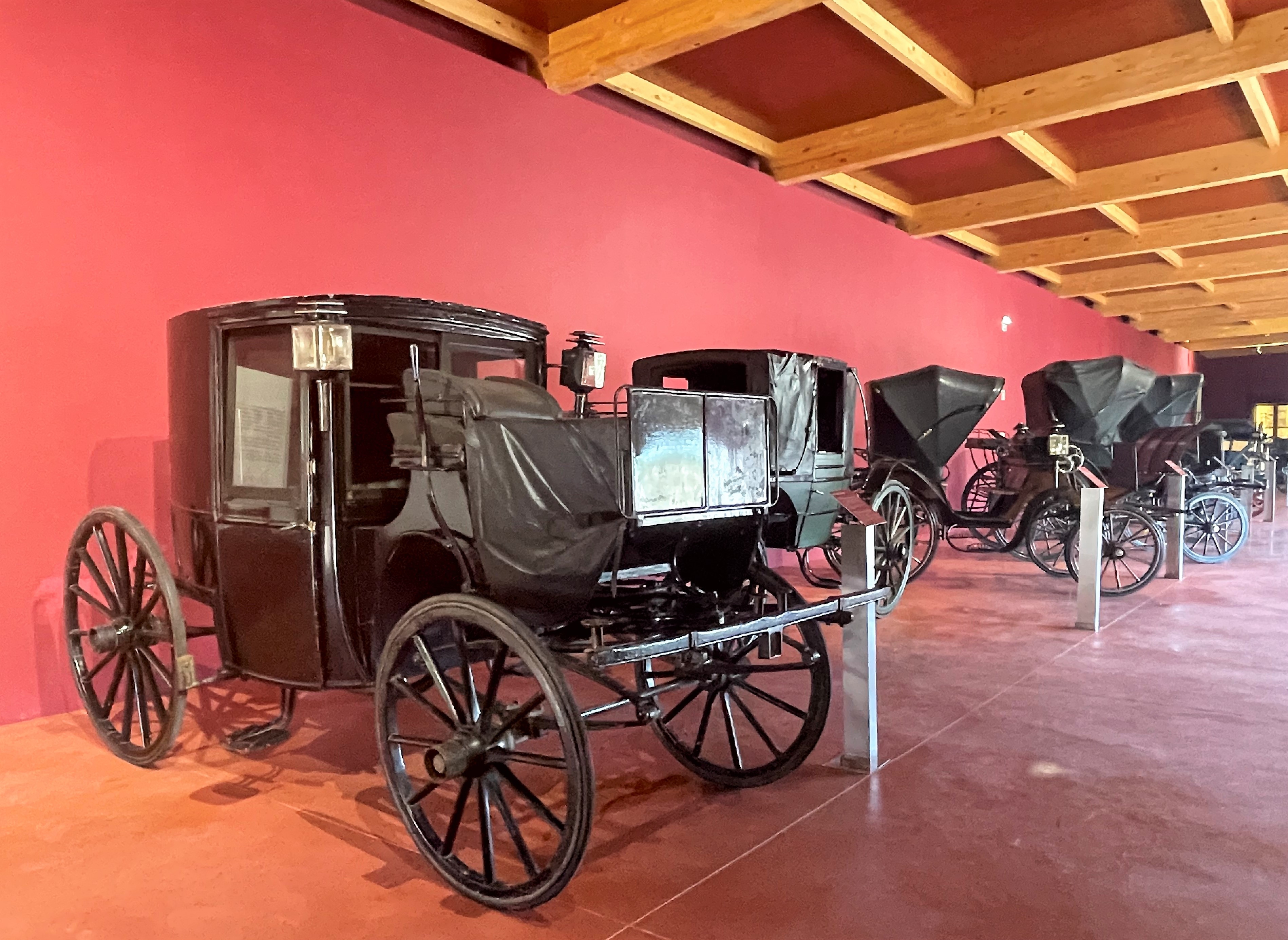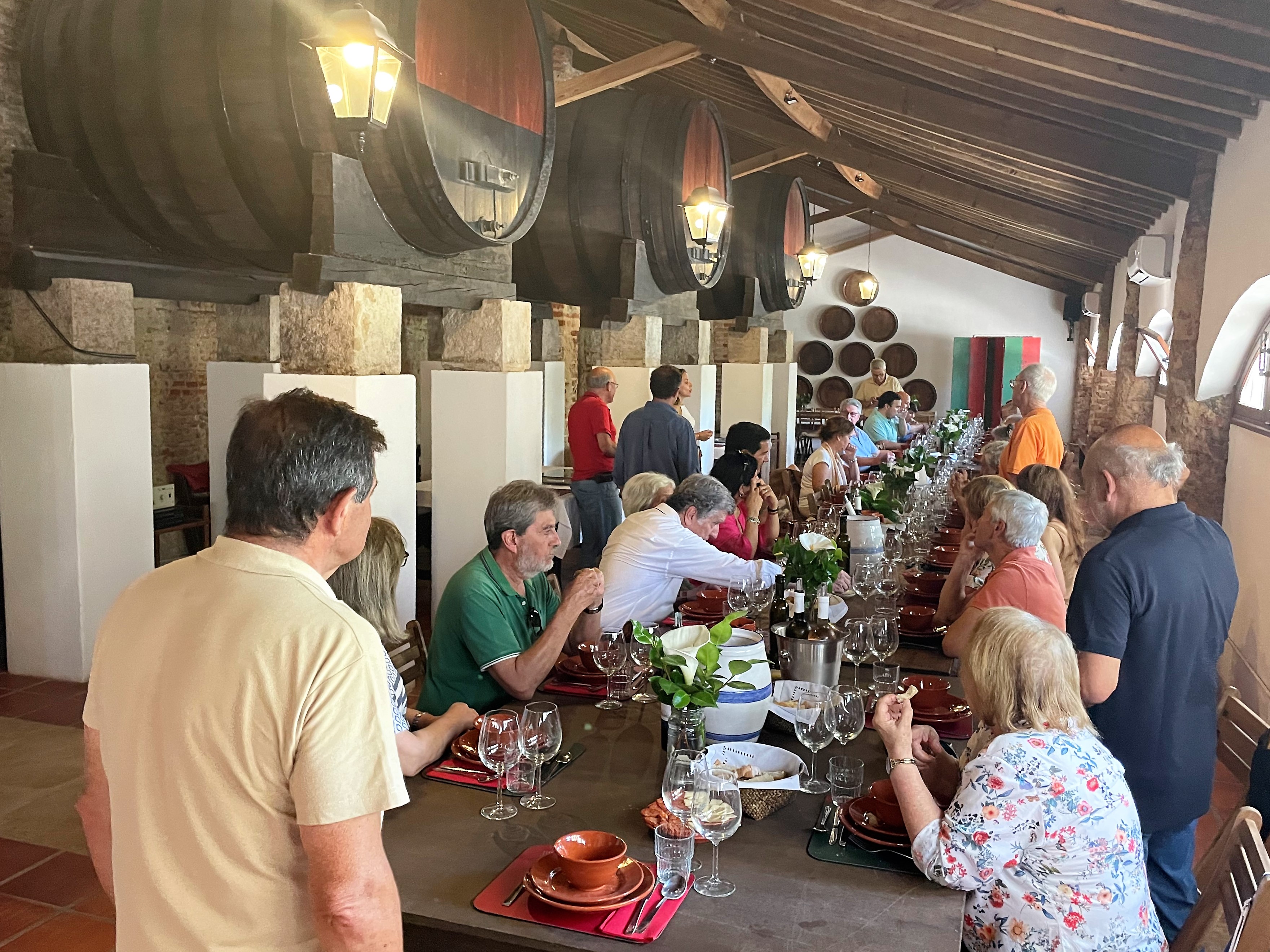A hot day was foreseen, which went well in the escalabitano style, but that didn't stop the Members from being present at the Quinta da Lagoalva de Cima, which extends along the south bank of the Tagus River, about 2km from the town of Alpiarça and 11km from Santarém.
While we waited for the arrival of all the registered members, Maria Antão, the young Tourism Technician, spoiled us with coffee and cookies.
Due to the high temperature that was already being felt, the order of the visit points was changed and we started with the equestrian demonstration in which a purebred Lusitano horse with gray color, convex head and good physical conformation proved to us why training in the discipline of Dressage has given such good results in competitions. It was evident the perfect connection between horse and rider who exercised the command actions in an almost imperceptible way.
Once close to the chapel, it was time to enter and realize that it and the residential palace were built after investments that, started on December 9, 1776, led to the opening of a ditch and the construction of a piled dike in order to minimize the effects of the floods caused by the Tagus River. By that time, a hundred people lived there and the mass was said every Sunday. At that time about a hundred people lived there and mass was celebrated every Sunday. Nowadays it is only reserved for the Catholic celebrations of the Holstein Campilho family. It is consecrated to Saint Peter and has canvas paintings whose date is unknown.
From there we move on to the Museu dos Carros de Cavalos which, inaugurated in 2022, displays a collection of 19th and 20th century hypomobile vehicles, as well as several harnesses, with special emphasis on those that the 1st Duke of Palmela ordered for the two gala carriages with which the Duchess in one and he in the other participated in the coronation procession of Queen Victoria, in London, on June 28, 1838. Although he was Ambassador Extraordinary and Plenipotentiary and personally represented Queen Maria II at these ceremonies, he insisted on having the carriages built at his own expense at the London company of L. & C. Thrupp. Both are on display at the Museu Nacional do Traje, located at Quinta do Monteiro-Mor, the former residence of the Palmela family in Lumiar.
The lunch served in the Rota do Vinho with integrated wine tasting revealed that Pedro Pinhão, administrator and director of oenology, in partnership with winemaker Luís Paulino, put on the table Lagoalva white, rosé and red wines that were to the general liking.
It was during lunch that another production offered by the Vale Rêgo couple circulated from hand to hand, this time regarding the 2022 Christmas Dinner, for which we are very grateful.
And if outside the day was still hot, inside the conversation was warm and ended, at Silva Carvalho's suggestion, with an evocation to the memory of the Member Armando Valle Féria recently deceased.
Lastly, and before saying goodbye to those who treated us so well, it was time to take a Family Photo with the cars in front of the imposing 18th century Palace that has always preserved its appearance of baroque-pombaline manor house.
THE HISTORY of Quinta da Lagoalva de Cima dates back to the reign of King Sancho I who, in 1193, donated it to the Military Order of Santiago which, later, Dom Afonso II, in 1218, and the Papal Bull of Innocent IV, in 1245, reaffirmed.
As a Donatary possession or Commendam, the estate passed through several members of the Avis Dynasty and other noble families as bargaining chip in exchange for political favors during our Filipino and Restoration periods.
During the reign of King João V, the Secretary of the Overseas Council, Manuel Lopes de Lavre came into possession of this Commendam, which at the beginning of the 19th century were leased to the Lima-Mayer family.
With the 1820 revolution, the assets of religious and military orders were nationalized or put up for sale, and the Quinta da Lagoalva de Cima, in 1834, was purchased by Henrique Teixeira de Sampayo, 1st Count of Póvoa.
In 1846, with the marriage of his daughter and heiress, D. Maria Luisa Noronha de Sampayo, Countess of Póvoa, with D. Domingos António Maria Pedro de Souza e Holstein, the future 2nd Duke of Palmela, the property became part of the heritage of the Palmela family, where it is still today.
Successively always in the power of their descendants, the land now belongs to the Sociedade Agrícola Quinta da Lagoalva de Cima S.A.
This colection of hippomobile vehicles, from the 19th and 20th centuries, shows a series of innovations due to the progressive liberalization of transport and technological breakthroughs brought about by the Industrial Revolution. Discoveries of which some stand out: structuring suspension with elliptical and semi-elliptical steel springs; rubber coating of wheels in order to make car circulation faster on roads and streets progressively paved with cobblestone or the new macadam surface (developed by Lord MacAdam); the advent of a variety of lantern models placed on either side of the coachman seats, to better iluminate and signal the presence of the vehicle; shim brakes on back wheels operated by lever, crank or handwheel; and the implementation of pedal bells.
The building of such vehicles was carried out by companies of industrial nature, which came close to mass prodution, and promoted the creation of several typologies, all related to its function in urban and countryside areas. The names varies according to their country or manufacturer.Following this evolution comes up the ideia of “mark” often inscribed on the wheel hubs, thus allowing for the publicity of the maker. As is the case, on this colletion, of the vehicles buit by Binder, of Paris; Jones Frères, of Brussels; and Thrupp & Maberly, Peter & Sons and [John] Ward, of London.
(Source: exhibition areas at Quinta da Lagoalva de Cima)

























